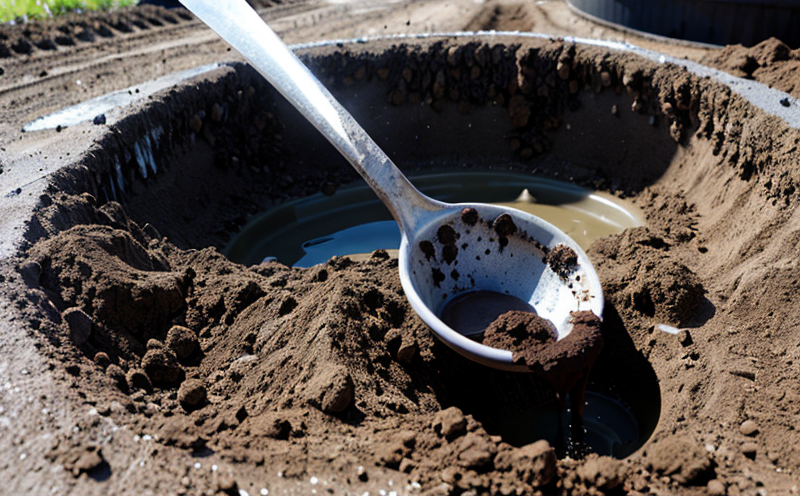APHA 5310C TOC by UV Persulfate in Sludge Test
In wastewater and sludge management, understanding the total organic carbon (TOC) content is crucial for optimizing processes and ensuring regulatory compliance. The American Public Health Association's Standard Methods for the Examination of Water and Wastewater (APHA 5310C) provides a robust protocol for TOC determination using UV persulfate digestion in sludge samples.
This method involves digesting the sludge sample with potassium persulfate under ultraviolet light to oxidize organic compounds. The resulting carbon dioxide (CO₂) is then absorbed into sodium hydroxide, and the resulting solution is titrated to determine TOC levels accurately. This technique ensures a high degree of precision and reliability in measuring TOC content.
The APHA 5310C method is widely recognized for its simplicity and efficiency, making it suitable for routine monitoring in laboratories handling various types of sludge samples. It can be used to assess the effectiveness of treatment processes or monitor the quality of biosolids before land application. The method's robustness allows for consistent results across different laboratory settings.
For accurate and reliable TOC measurements, sample preparation is critical. Sludge samples must be thoroughly mixed and homogenized to ensure a representative sample is used during digestion. This ensures that the TOC content accurately reflects the overall organic matter in the sludge. Proper digestion conditions are essential for complete oxidation of organic compounds without interference from other elements.
The APHA 5310C method also provides guidelines on handling and storing samples to minimize contamination and degradation, which can affect the accuracy of the TOC measurement. Samples should be stored at a controlled temperature and protected from light to prevent any changes in their composition. This attention to detail is crucial for maintaining the integrity of the sample throughout the testing process.
Instrumentation plays a vital role in the APHA 5310C method, with specific requirements to ensure accurate measurements. The digestion step requires a UV digestion unit capable of delivering consistent ultraviolet light exposure and precise temperature control. For the titration step, an automated burette system or pH meter is recommended for precision and repeatability.
The APHA 5310C method provides detailed acceptance criteria to ensure that results are accurate and reliable. These criteria include specific digestion conditions, acceptable sample-to-digestant ratios, and permissible variations in titration readings. Adhering to these criteria ensures that the TOC measurements meet regulatory standards and provide meaningful data for decision-making.
In summary, the APHA 5310C method offers a reliable and efficient approach to determining TOC content in sludge samples. By following precise sample preparation, digestion, and titration procedures, laboratories can achieve accurate and consistent results that are essential for effective wastewater management and compliance with environmental regulations.
Benefits
- Accurate TOC Measurements: Ensures precise determination of total organic carbon in sludge samples.
- Efficient Digestion Process: UV persulfate digestion provides complete oxidation of organic compounds, leading to accurate results.
- Routine Monitoring: Suitable for regular monitoring and assessment of wastewater treatment processes.
- Regulatory Compliance: Ensures that TOC measurements meet environmental regulatory standards.
- Precision and Reliability: Provides consistent results across different laboratory settings, enhancing confidence in the data.
- Sample Integrity Maintenance: Detailed guidelines for sample handling and storage minimize contamination and degradation.
Eurolab Advantages
At Eurolab, our expertise in sludge & biosolids testing ensures that we provide the most accurate and reliable TOC measurements using the APHA 5310C method. Our experienced team of analysts is well-versed in handling various types of sludge samples, ensuring consistent results.
We invest heavily in state-of-the-art instrumentation to support our testing processes, including UV digestion units and automated burettes for precise titration. This allows us to deliver accurate TOC measurements consistently across different sample batches.
Our commitment to quality is reflected in the rigorous training of our analysts and strict adherence to international standards such as APHA 5310C. We also ensure that all samples are handled with care, adhering to our detailed guidelines for storage and preparation to maintain sample integrity.
Eurolab's advanced laboratory facilities provide a controlled environment conducive to accurate TOC measurements. Our commitment to excellence is further demonstrated by our continuous efforts to stay updated on the latest testing methodologies and equipment.
International Acceptance and Recognition
The APHA 5310C method for determining TOC in sludge samples has gained widespread acceptance and recognition globally. This is particularly true in regions where strict environmental regulations are in place, such as the European Union (EU) and North America.
Regulatory bodies like the U.S. Environmental Protection Agency (EPA) and the European Commission have endorsed this method for its reliability and accuracy. The APHA 5310C protocol is widely used in wastewater treatment facilities and environmental research institutions worldwide.
The method's acceptance extends to international standards such as ISO, ASTM, EN, and IEC, ensuring that results are comparable across different countries and regions. This global recognition enhances the credibility of TOC measurements obtained using this method, making it a preferred choice for laboratories seeking accurate and reliable data.





